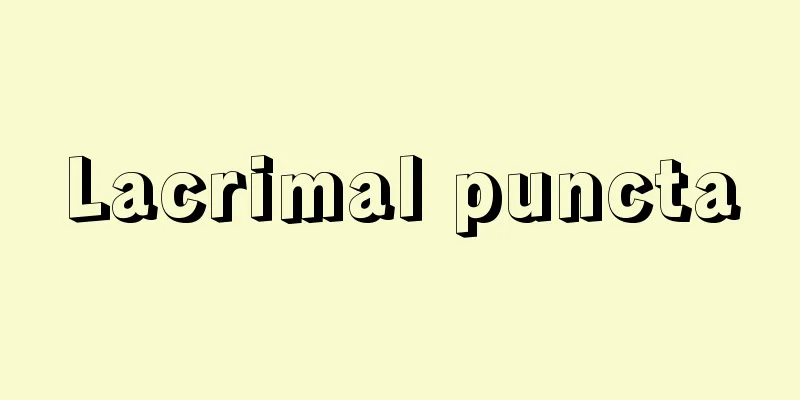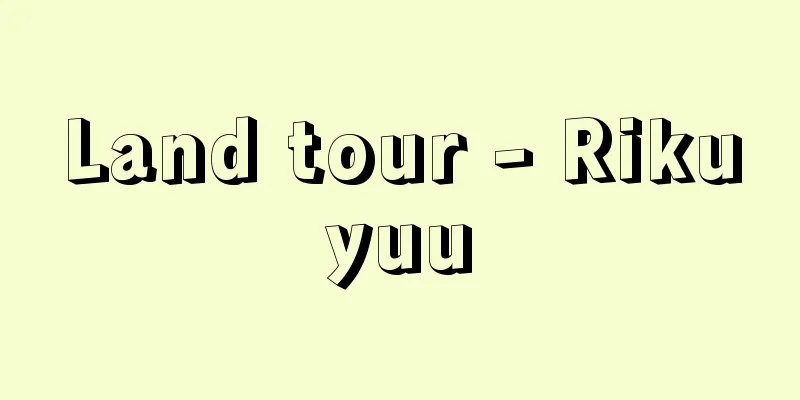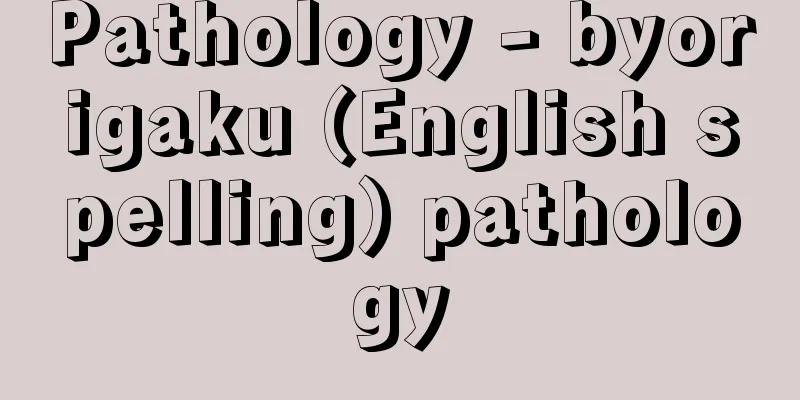Iwai Rebellion

|
The rebellion of Tsukushi no Kimi (Kuni no Miyatsuko) occurred in the first half of the 6th century. According to the entry for June of the 21st year of the reign of Emperor Keitai in the "Nihon Shoki," Omi no Kenu no Omi led an army of 60,000 men to Mimana, where he attempted to restore Southern Kara and Tokukoton, which had been conquered by Silla, and bring them into Mimana. Silla secretly bribed Tsukushi no Kuni no Miyatsuko Iwai, who had the intention of rebelling, and invited him to block Keno no Omi's army. Iwai established his influence in both Hi and Toyo provinces, blocking Keno no Omi's army. In August, the Emperor ordered Omuraji Mononobe no Arakabi to attack Iwai, and in November of the following year, the general Arakabi fought Iwai in Mii District, Tsukushi (Mitsui District, Fukuoka Prefecture) and killed him. In December, Tsukushi no Kimi Kuzuko, fearing that his father would be implicated, offered up the Kasuya no Miyake storehouse to avenge his death sentence. On the other hand, the Kojiki simply states that during the reign of Emperor Keitai, Tsukushi no Kimi Ishii did not follow the Emperor's orders, so Mononobe Araka no Omi and Otomo no Kanamura no Muraji were sent to kill him. A lost passage in the Chikugo no Kuni Fudoki (quoted in the Shaku Nihongi) gives the same reasons as the Kojiki, but includes a different version that is more local. According to this, Tsukushi no Kimi Iwai's tomb is located two ri south of Kamitsuma Prefecture (northeastern Yame County, Fukuoka Prefecture), and it was built by Iwai during his lifetime, with stone figures such as stone men, stone horses, and stone shields placed around it and in a separate area. It is also said that when Iwai realized that he had no chance of defeating the government forces, he fled alone to Kamitsukenoagata in Buzen Province (the southern part of Chikujo County, Fukuoka Prefecture) where he died, and that the government forces were furious at having allowed Iwai to escape, so they vented their frustration by destroying the stone man and stone horse at Iwai's grave. Regarding whether Iwai's rebellion was a large-scale event that lasted a year and a half as the Shoki states, and whether Silla was involved in the cause of the rebellion, there is a view that the article in the Shoki contains many parts that are explained using the Kudara Hongi (Records of Baekje), and many parts that have been modified using Chinese characters, and that the historical facts do not go beyond the articles in the Kojiki. However, from the field of archaeology, it has been proven that the Iwatoyama Tomb (Yoshida, Yame City, Fukuoka Prefecture) matches the appearance of Iwai's tomb as described in the Chikugo no Kuni Fudoki, and furthermore, the distribution of the stone men and stone horses that characterize this tomb extends not only to Tsukushi but also to Hi and Toyokuni, where Iwai had his power base, supporting the authenticity of some parts of the Shoki. The conventional view regarding the significance of this rebellion was that it was a revolt by local ruling families (kuni no miyatsuko) who could no longer bear the burden of the Yamato court's military expeditions to Korea, but in recent times the view that this rebellion was a conflict between the Kinai royal authority and the relatively independent Tsukushi forces (those in northern Kyushu) over control of diplomatic power, and that the Tsukushi forces were seeking a way to separate from the Kinai royal authority and form their own "government", has been gaining popularity. According to this view, after the Iwai Rebellion, for the first time, Tonkura, which had the character of being directly controlled by the Yamato royal authority, were established in Kyushu, and the Tsukushi forces were organized as one of the regions (kuni no miyatsuko) of the central royal authority. [Toshio Kobayashi] "The Disintegration of the Ancient Nation" by Hayashiya Tatsusaburo (1955, University of Tokyo Press)" ▽ "Basic Research into Ancient Japanese History, Vol. 1" by Sakamoto Taro (1964, University of Tokyo Press)" ▽ "Iwatoyama Tomb" by Mori Teijiro (1970, Chuokoron-Bijutsu Shuppan)" ▽ "The Formation of the Japanese Nation" by Yamao Yukihisa (Iwanami Shinsho) [Reference item] |Located almost in the center of the Yame Kofun Group, this is one of the largest keyhole-shaped tumuli in Kyushu. Its total length is about 135m, and its diameter at the rear is about 60m. It is thought to be the tomb of Tsukushi no Kuni no Miyatsuko Iwai. First half of the 6th century Nationally designated historic site Yame City, Fukuoka Prefecture ©Masashi Tanaka "> Iwatoyama Tomb Source: Shogakukan Encyclopedia Nipponica About Encyclopedia Nipponica Information | Legend |
|
6世紀前半に起こった筑紫君(つくしのきみ)(国造(くにのみやつこ))の反乱。『日本書紀』継体(けいたい)天皇21年6月条によると、近江毛野臣(おうみのけぬのおみ)は6万の軍隊を率いて任那(みまな)に赴き、新羅(しらぎ)に攻略されていた南加羅(みなみから)と㖨己呑(とくことん)を再興して任那にあわせようとした。新羅はひそかに反逆の志ある筑紫国造磐井に賄賂(わいろ)を贈り、毛野臣の軍を防ぐよう勧誘した。磐井は、火(肥)(ひ)、豊(とよ)の両国に勢力を張り、毛野臣の軍を遮った。8月になって、天皇は、大連(おおむらじ)物部麁鹿火(もののべのあらかび)に磐井を討つように命じ、翌22年11月に大将軍麁鹿火は磐井と筑紫の御井(みい)郡(福岡県三井郡)で交戦しこれを斬(き)った。12月、筑紫君葛子(くずこ)は父に連座することを恐れて、糟屋屯倉(かすやのみやけ)を献上して死罪を贖(あがな)ったとある。 一方、『古事記』では、継体天皇の御世、筑紫君石井(いわい)が天皇の命に従わなかったので、物部荒甲(あらかい)大連と大伴金村(おおとものかなむら)連の2人を遣わしてこれを殺した、と簡単に記述されている。『筑後国風土記(ちくごのくにふどき)』逸文(『釈日本紀(しゃくにほんぎ)』所引)も『古事記』の理由と変わらないが、在地に密着した別伝を載せている。それによると、上妻県(かみつやめのあがた)(福岡県八女(やめ)郡の北東部)の南2里に筑紫君磐井の墓墳があり、それは磐井が生前から造営したもので周囲や別区に石人・石馬、石盾などの石造物を配置してあるという。また、磐井は官軍に勝てそうもないことを知って、ひとり、豊前(ぶぜん)国上膳県(かみつけのあがた)(福岡県筑上(ちくじょう)郡の南部)に遁走(とんそう)して死んだこと、官軍は磐井を逃がして怒りやまず、磐井の墓の石人・石馬を破壊して鬱憤(うっぷん)を晴らしたと伝えている。 磐井の反乱が『書紀』のいうように1年半に及ぶ大規模なものであったのか、またその反乱の原因に新羅がかかわっていたのかについては、『書紀』の記事には『百済本紀(くだらほんぎ)』によって説明した部分、漢文的修飾を受けている部分が多く、史実は『古事記』の記事以上を出るものでないとする見解もある。ただ、考古学の方面から、岩戸山(いわとやま)古墳(福岡県八女市吉田)が『筑後国風土記』の伝える磐井の墓のようすと適合することが証明され、しかもこの古墳を特徴づける石人・石馬の分布が、筑紫のみならず磐井が勢力基盤とした火・豊国にも及んでいることなど、『書紀』の一部の信憑(しんぴょう)性を裏付けるものとなっている。この乱の意義については、従来、大和(やまと)朝廷の朝鮮出兵の負担に耐えかねた地方豪族(国造)の反乱というのが通説であったが、近時、この乱は、畿内(きない)王権とそれとは相対的に自立性をもった筑紫勢力(北部九州勢力)との外交権掌握をめぐる対立であり、筑紫勢力は畿内王権を離れて独自の「政権」形成への道を模索していたのだとする見解が有力になりつつある。この見解によれば、磐井の乱後、初めて九州に大和王権の直接支配としての性格をもつ屯倉が設定され、筑紫勢力は、中央王権の一地方(国造)として秩序づけられることになる。 [小林敏男] 『林屋辰三郎著『古代国家の解体』(1955・東京大学出版会)』▽『坂本太郎著『日本古代史の基礎研究 上』(1964・東京大学出版会)』▽『森貞次郎著『岩戸山古墳』(1970・中央公論美術出版)』▽『山尾幸久著『日本国家の形成』(岩波新書)』 [参照項目] |八女古墳群のほぼ中央に位置する、九州最大級の前方後円墳。全長約135m、後円部径約60m。筑紫国造磐井の墳墓と考えられている。6世紀前半 国指定史跡 福岡県八女市©Masashi Tanaka"> 岩戸山古墳 出典 小学館 日本大百科全書(ニッポニカ)日本大百科全書(ニッポニカ)について 情報 | 凡例 |
Recommend
Tokyo Music School
The predecessor of the Faculty of Music at Tokyo U...
Pu Shou Geng - Hojuko
Dates of birth and death unknown. A Muslim from t...
Production relations (English spelling)
The social relations that humans form with each ot...
Square platform tomb - Hokeidaijobo
A type of burial system that was popular mainly in...
Ishchari - Ishchari
… Old Babylonian art was marked by the developmen...
Thread Warifu System - Thread Warifu System
…During that time, a certain high profit rate was...
Mobile retroverted uterus
…It can be classified as congenital, acquired, mo...
Row - Gyo
[1] 〘Noun〙① A Buddhist term. (i) (A translation of...
EDTA - Edta
Abbreviation for ethylenediaminetetraacetic acid....
Illegal radio waves - Fuhou Denpa
When establishing a radio station, a license must ...
Tamara
…Males often mate with domestic females. The Mind...
Receptacle - Hard
Also called the flower bed. In the flower of angi...
《Kashiri》 - Kashiri
...But some folk songs were passed down orally, a...
Graupner, C.
...His works from his time in Cöthen are full of ...
Settlement - Settlement
A procedure carried out to settle legal relations...









